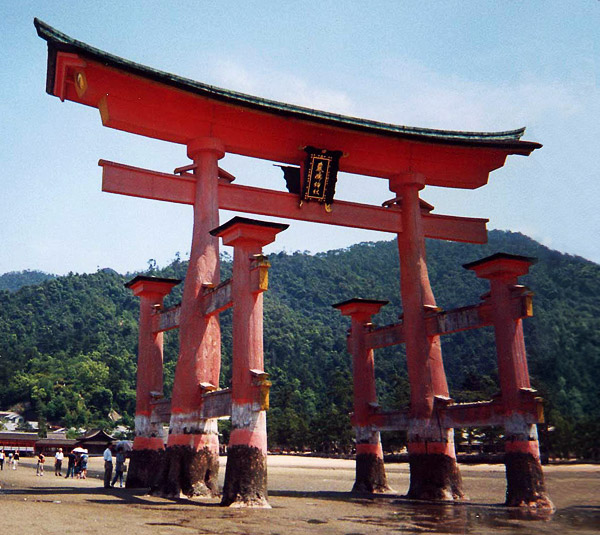| Also called yotsuashi torii lrΉ, gongen
torii »Ή or chigobashira torii tΉ. A Shinto shrine gate *torii
Ή, where square posts call *hikaebashira
T, chigobashira t, or kobashira ¬ are set in front and back
of the two pillars that support the ornamental entrance-gate. They extend a distance
of slightly less than half the width between the bases of the main pillars, oyabashira
e, measured from pillar center to pillar center. Each post is connected to the
main pillars by two penetrating ties, hikaenuki TΡ. The posts are slightly
inclined toward the main pillars. The top lintels, tie beam, wedges, center strut
and mound-shaped bases are typical of a type of torii called *myoujin
torii Ύ_Ή. The only difference is the addition of a circular plate *daiwa
δΦ, at the top of the pillars. Because of the amalgamation of Shinto and Buddhism
from the 12c to 15c, some scholars suggest that the meaning of ryoubu can
be equated with the Diamond and Womb Worlds, kontai ryoubu ΰΩΌ,
of Esoteric Buddhism and that this style torii originally may have contained
such symbolism. The ryoubu torii continued to be built after the Heian
period at shrines where there was a mixture of Shintoism and Buddhism. Examples:
Kubohachiman Jinja Eͺ¦_Π (1535) in Yamanashi prefecture, Kehi Jinja Cδ_Π (1645)
in Fukui prefecture, and Itsukushima Jinja ΅_Π (19c) in Hiroshima prefecture.
|



